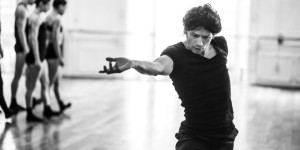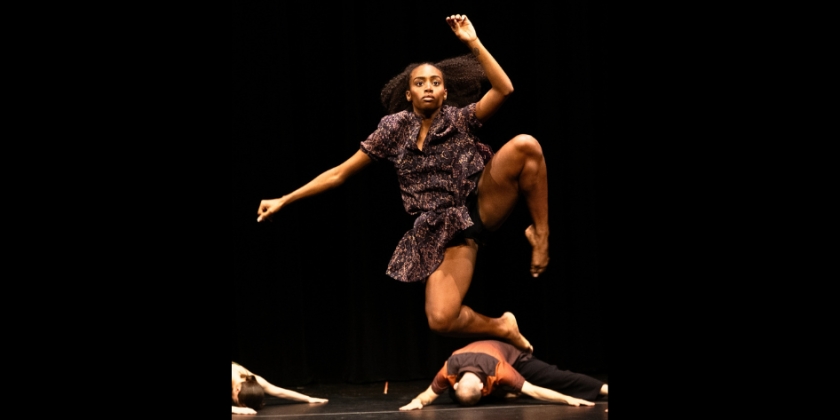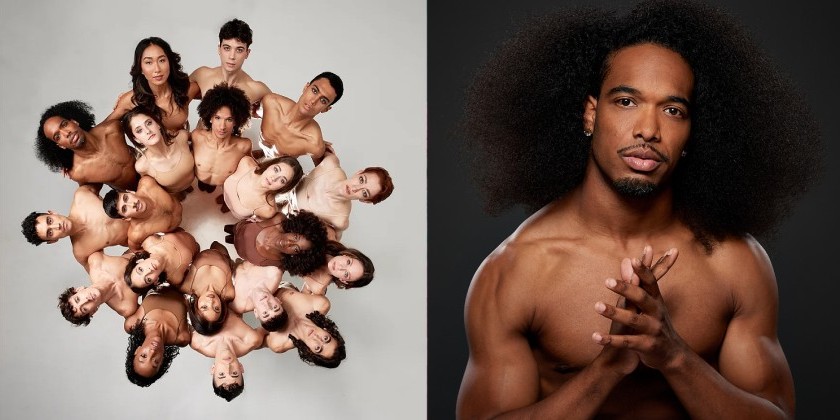IMPRESSIONS: "Dancing with Glass: the Piano Etudes" at The Joyce Theater
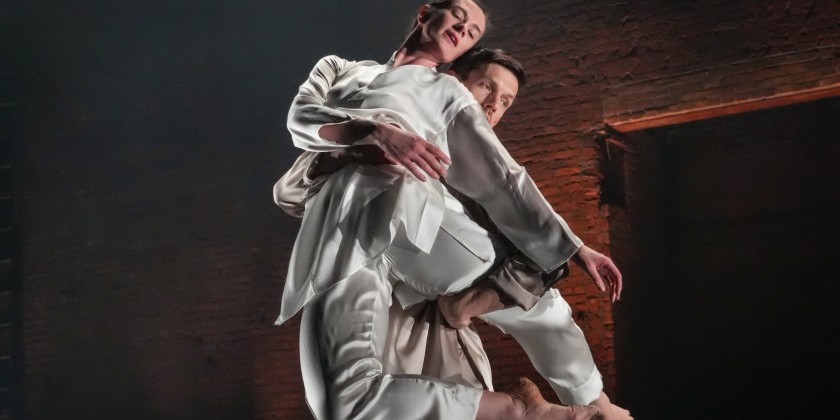
Dancing with Glass: the Piano Etudes
Music composed by Philip Glass
Choreography by Lucinda Childs, Chanon Judson, Justin Peck, Leonardo Sandoval, Bobbie Jene Smith & Or Schraiber
Featured Pianist: Maki Namekawa
Costumes Designed by Josie Natori courtesy of the Natori Company
Conceived and Produced by Pomegranate Arts
Part of Dance Reflections by Van Cleef & Arpels Festival in New York
The Joyce Theater
November 28 - December 10, 2023
Philip Glass’s 20 Piano Etudes, composed from 1991-2012, are the works most performed of his vast oeuvre. Written to challenge himself and improve his technical ability, the etudes serve as Glass’s autobiography. Together they define his technique and language. Maki Namekawa, considered a leading interpreter of the Piano Etudes, and the first to record the entire book, performed ten of them with verve and conviction at The Joyce Theater on November 28, 2023.
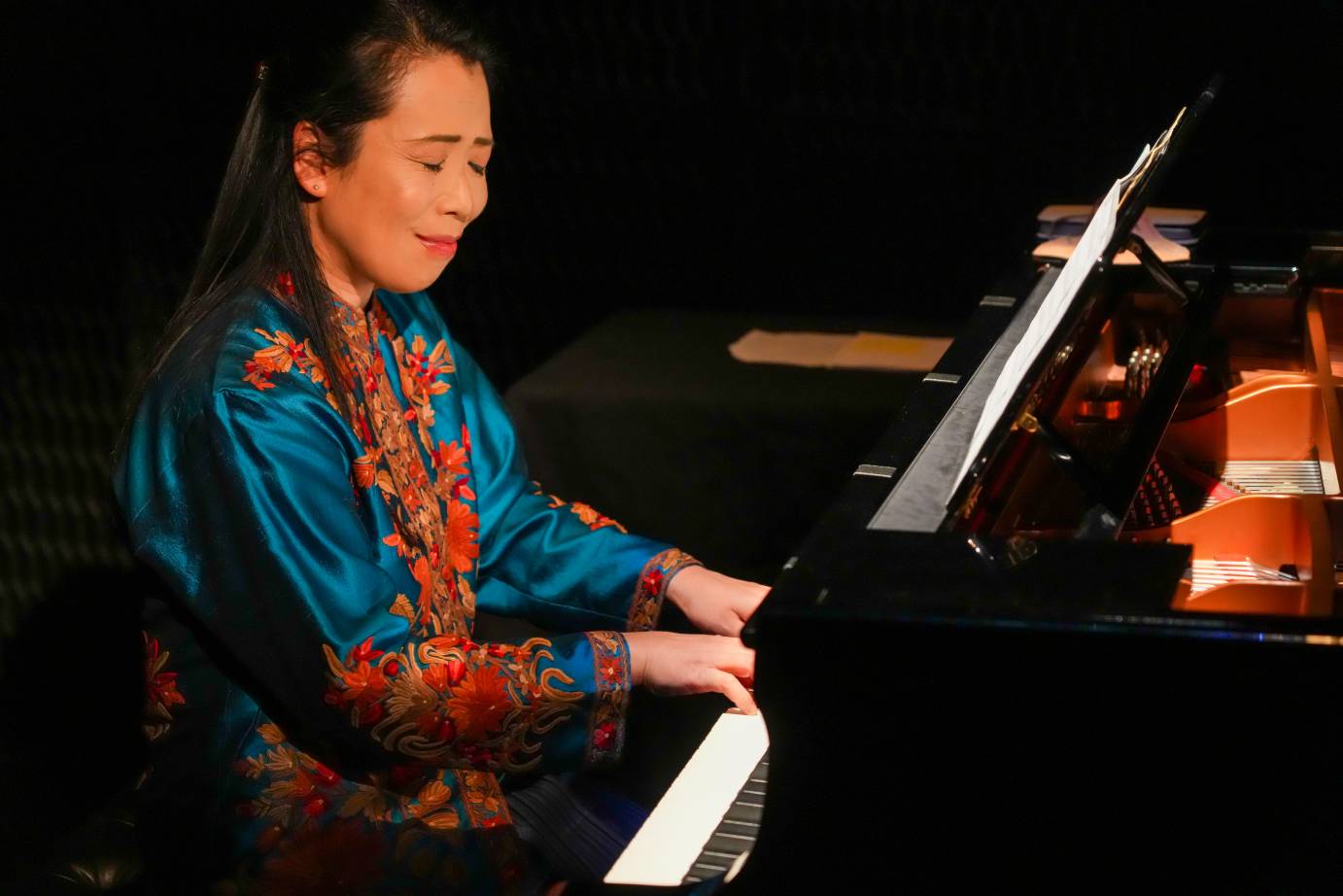
In Dancing with Glass: the Piano Etudes, five etudes (one interpreted by a guest pianist) were accompanied by dances, and six were played as solos. Namekawa’s transportive, sensitive, and jaunty playing wrapped the evening’s offerings into a gift. The performers’ flowing silk costumes by Josie Natori enhanced the movement with a rainbow of colors, balanced by black. With the etudes embracing each dance, the costumes integrated the evening.
Namekawa fittingly opens with Etude #1 by delving into the running and cavorting notes and returning to the refrain with vigor. Her skill is accompanied by the delight in her face, the soft pa-pa-pas formed by her lips, the small arch in her lower spine, and the close hover over the keys.
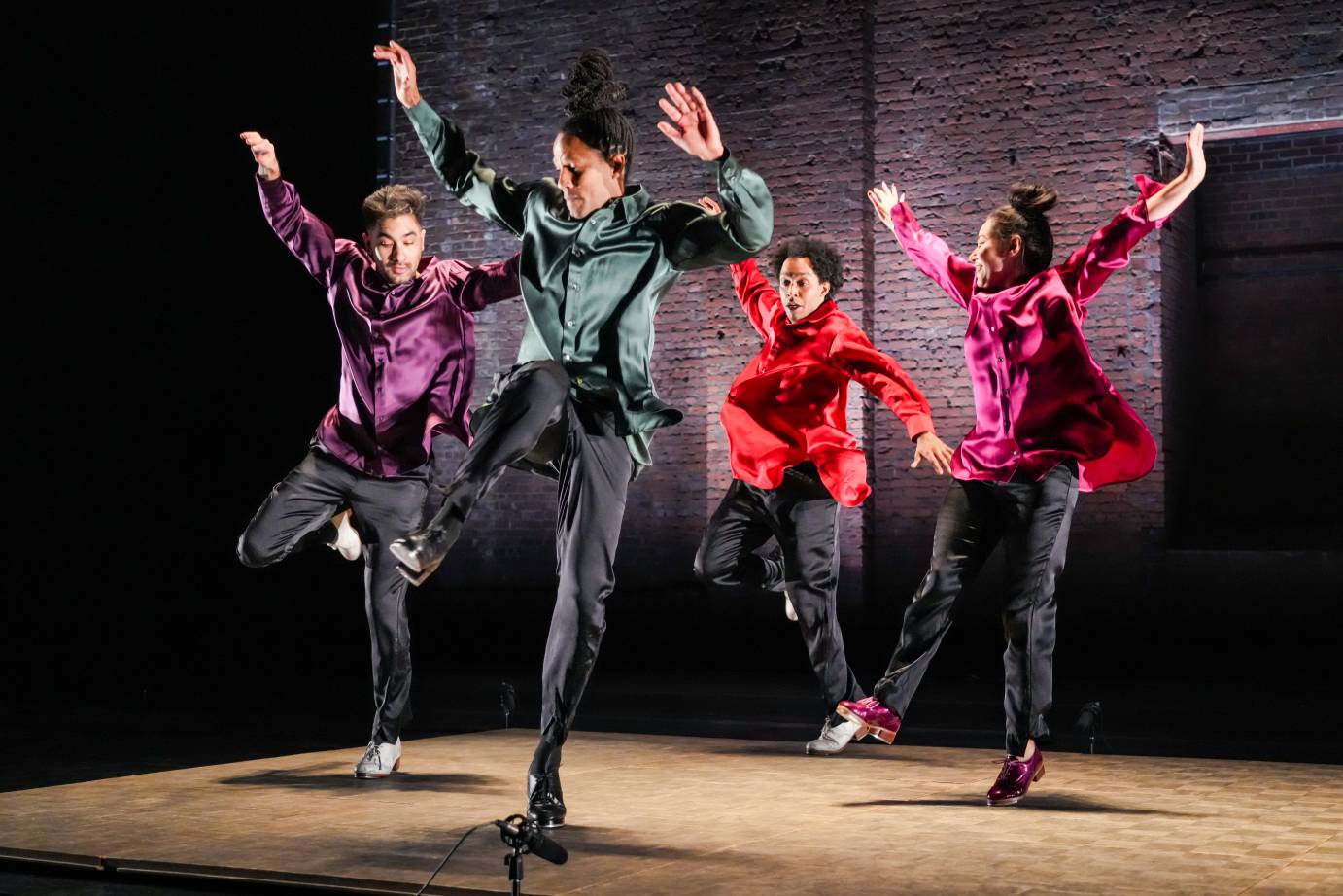
Five chords, two arpeggios and the low bottom note that concludes Etude #1 usher in Etude #13, which tapper Leonardo Sandoval choreographed, one of the most successful of the dances. Sandoval, Ana Tomioshi, Orlando Hernandez, Lucas Santana, and Noé Kains appear in silhouette and clap contrasting rhythms to create a full and varied cadence. A single performer waggles a finger in the air. The dance shifts when Kains, surprisingly, drops to the baby grand and plays the etude. Moving in unison, the dancers chug forward and backward, hop, cross over, heel tap, configure patterns, break the patterns, and reconfigure again. Their fleet feet divide the pulse and syncopate.
Etude #7, a breezier composition, follows. Namekawa rolls with the changes in tempo, producing sounds like bird whistles, until the lower register descends as a softer upper hand rises, recalling a long-lost prayer.
The four remaining contemporary dances hook into Glass’s signature repetition of sounds, expressing his texture and syncopations. Every dance replicates the precision, conciseness, and transportive nature of the music. Warm or cool, and working with varied dramatic themes, the music drives the choreographic choices and casts a similar sheen over the works, all of which are around the same length. The dances stay within the confines of the etudes and stick with safe themes rather than exploring something new.
.jpg)
Or Schraiber, a quicksilver and captivating performer, begins this co-choreographed duet with Bobbi Jene Smith, to Etude #8, by sharply and rhythmically contracting his flexed limbs. He then generously opens into an expansive lunge. After coiling viperlike to the floor, he rises and unfolds a leg while on relevé. Smith answers by smoothly arching and reaching for him, her signature thigh-length hair flying. They kiss passionately though awkwardly, intertwine and fractiously separate. The couple’s conflict ends when they walk off-stage, long backs erect, going their separate ways.
.jpg)
Dancing to Etude #11, Chanon Judson alternately lifts her legs in second position, luxuriantly creases into deep crouches and kicks forward while bending. Costumed in a long, shimmering green-blue sheath that emphasizes her lanky, supple limbs, her arms spread likes wings, and her pelvis churns, vibrates, and rocks. With hands resting on her thighs, she moves downstage on the diagonal and fleetingly smiles. With hands resting on her back, she walks upstage as the music fades.
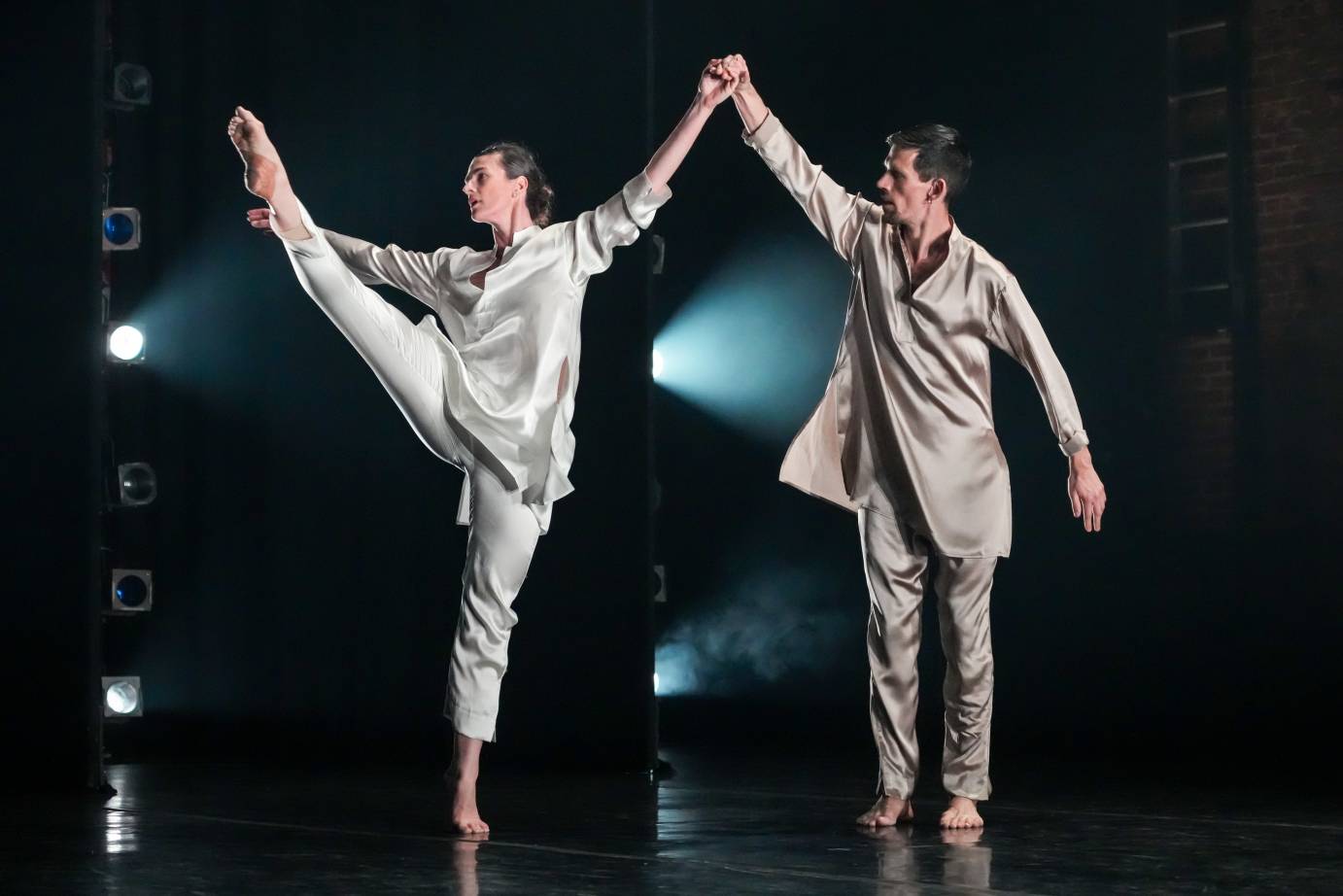
Lucinda Childs, a longtime collaborator of Glass’s, braids the elegant Caitlin Scranton beneath Kyle Gerry's arm. He lifts her, in a satisfying recurrent pattern that coordinates with the continuous music, Etude #18. Dressed in flowing beige-toned pants and shirts, and upright throughout, their dance is formal, efficient and full of pull and sway. In contrast to the emotional duet of Smith and Schraiber, there is no heat between the partners; rather there is a performative desire in the movement.
.jpg)
The arresting dancing of sneakered Patricia Delgado to Etude #6 (Haley Winegarden performed on alternating nights), performing in Justin Peck’s more pedestrian dance, make it a highlight of the evening. Garbed in a one-piece short-sleeved costume, belted at the waist, Delgado performs a series of quick, staccato gestures while seated on a chair. She rolls off the chair to reiterate the sequence, adding a caress to the chair’s top rail. Large, open movements in space offer a relief, until the chair beckons, and she succumbs belly down.
The final, meditative Etude #20, a melody in sharps, with chords descending and ascending, and low notes prevailing, brings the night to a close with a rebirth of high trills.







